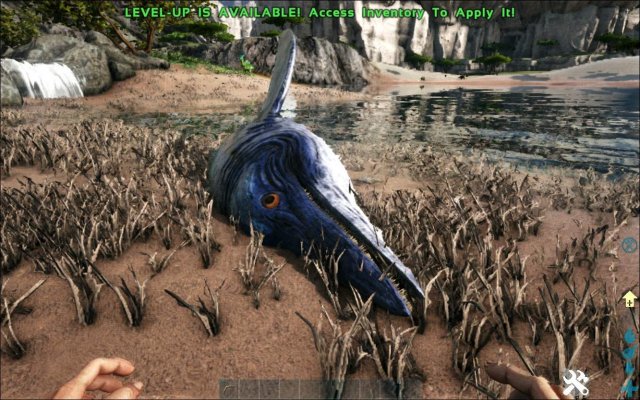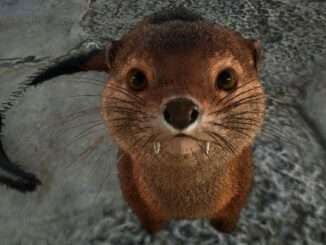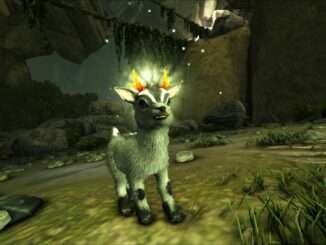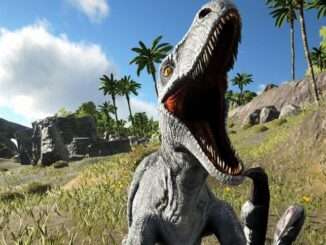
A beginners guide to breeding dinos, with how to successfully incubate eggs and explanations of how to keep them from leaving you to “the big nursery in the sky”.
Guide Contents
Guide to Breeding
Note: Credit goes to emcarvalho64
Introduction
Breeding is a way of showing you are quite well-off on The Ark, from having the resources needed to incubate and egg and keep the baby alive, and having enough dinos to establish a decent bloodline in which mutations can occur. This guide will cover the breeding basics of egg laying animals, mammals, the do’s and don’ts of raising your newly hatched or birthed creature, and establishing a bloodline in which a mutation can surface. So all people just starting to select “enable mating” on your dodos’ Behavior slot, read this guide so you don’t end up looking like the poor critter in the picture when you get the notification of your dodo chick dying of starvation in front of his parents.
Egg Laying Dinosaurs
Dinos that lay eggs include all birds; like pteras and argies, reptiles; like rexes and gigas, and amphibians; like beezulbufos (I swear, if i spelled that right i will scream). There is no gestation period after the breeding, and the egg is laid as soon as the breeding meter reaches 100%. Every fertilized egg has a 7-day spoil timer and a health bar, which will go down if the egg is too hot or cold. Use Fireplaces, campfires, or A/C units to keep the egg at a proper temperature and make sure the egg doesn’t die before hatching. Some dinos can only be tamed via egg theft (i feel like a jerk writing this :l) Which is were the use of a oviaraptor comes into play, because egg theft tames are AGGRESSIVE when you try to get eggs, like trying to be one of the pigs in the Angry Birds cartoons.
Mammals (Live Births)
Mammals give live births, in case you didn’t take science class in third grade, and the same applies to Ark. After the mating meter reaches 100%, a second meter appears for the female. This bar is the Gestation meter, and depending on the species, the timer varies. For example, a dire wolf’s time is within 20-25 minutes (Which honestly feels like nothing) and then you get a dire wolf puppy.
After Hatching / Birth
After you keep that egg at that perfect temperature and wait through that gestation timer, you will have a baby dino that needs to be imprinted upon and fed. During the last few minutes of those timers, stay crouched and close to that egg of mother animal, and imprint on the critter immediately. You need to place that dino’s taming food in the baby’s inventory, and keep watching that inventory to continue stuffing food into it. Some babies eat very specific foods, like baby otters only eat fish, and baby vultures only eat rotten meat, so don’t get caught unprepared.There is one final meter to watch when the baby is born/hatched, this is the Maturation Meter, which goes up as your baby dino grows up. Finally, if there are twins from your egg or mother animal, and you aren’t in creative mode or extremely well off and have the food to raise 2 babies, you will have to choose a twin to “release to Elsewhere” (I hope someone understood that literary reference from The Giver).
Do’s and Dont’s of Raising Your New Baby
- Do: Name your baby once it’s after the critical first 5% of it’s maturation, when its hunger is at a stable point.
- Don’t: Name your baby immediately after imprinting. This is usually when the baby can die, because it needs food mere seconds after birth. (and you don’t know the gender until mashing a combination of accept and cancel on the naming tab) (My first baby dino, a dilo named Diego suffered that fate. He will be missed)).
- Do: Have your baby dino food before the baby arrives, by at least 5 minutes, so you can imprint upon and feed the baby dino. (In the immortal words of Scar from the Lion King: “Be Prepared”).
- Don’t: Go on a hunt for meat when you know your baby dilo will hatch within minutes, which you know flies by quickly.
- Do: Keep the baby close by, because you never know if a raptor will pay your humble dwelling a visit and get himself some delicious baby dodo.
- Don’t: Set the baby on Wander in an open area, because if you haven’t noticed, predators exist and can get hungry too.
Follow these simple guidelines to make sure you don’t feel like my bro Flipper, who probably lost his first baby dino too, based on his expression.
Mutations for Idiots
You might see on more complicated guides sections explaining how to get all the color mutations and things. This is like that in only one way: how to get mutations, whether it be a Stat Mutation or a Color Mutation.
The key to accessing the secret, complex world of mutations is creating a strong bloodline for your dinos. This involves a combination of breeding your current dinos and getting new ones to add to the gene pool. To see what I mean, check out this super-realistic simulation!:
- So you have your first breeding pair of your favorite dino (Use your imaginations here: I’ll be using jerboas) named Male A and Female A.
- You breed Male A and Female A and get Female B, your new baby.
- Once Female B reaches adulthood, to keep the bloodline strong, you should get a new male.
- Supposedly, you get the male, who you name Male B for organization purposes.
- You should then breed Male and Female B. (Duh)
- Once the baby is at a point where it won’ die when you don’t pay attention, and in its inventory, there should be a tab for “Show Ancestors”. (If there isn’t, there is a problem).
- Clicking on that tab will show your new baby’s parents, and on the left and right sides of the screen will show the Matrilineal and Patrilineal lines.
- Chances are, by this point, there should be the names of your dear friends Male A and Female A in either the aforementioned Matrilinial or Patrilineal line areas. Alongside the names of those areas should have something that says “Mutations 0/20”.
- There is the slight chance that that mutation counter will say “Mutations 1/20” which means that the bloodline has a mutation that has surfaced.
- Provided that your new baby with that mutated gene; Male C survives until adulthood, follow those same steps you did for Male and Female B until there is a clear mutation.
Fantastic simulation, wasn’t it?
Cutting edge simulation technology, which I managed to get a hold of to teach everyone to get that neon purple jerboa baby, so you’re welcome guys.
Further Raising Baby Dinos
- Baby dinosaurs have 4 stages of maturation, which this section will walk you through, because this guide needs more pages.
- The first stage is Baby, where you need to pay very close attention to your dino child, because they have very few health and food points, and cannot feed from food troughs.
- The second stage is Juvenile, where the little dino can eat from food troughs, but might still need monitoring if you’re one of those helicopter moms.
- The third stage is Adolescent, where only a true helicopter parent will monitor the thing. It is strong enough to live on the food trough alone without parents (cue the over-dramatic crying of “he’s grown up so fast!”).
- The fourth and last stage is adult, where the dino is rideable, and is able to breed with others of its species.









Be the first to comment